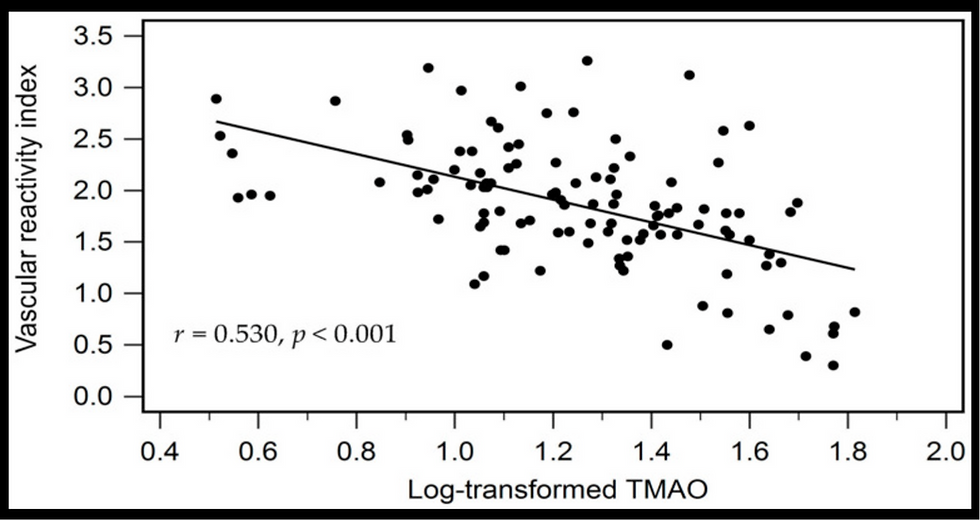Endothelial Dysfunction… Where are we with therapy?
- heartlung
- Jan 16, 2023
- 3 min read
Microvasc Res. 2018;119:7-12. doi: 10.1016/j.mvr.2018.03.012. [Epub ahead of print]
Endothelial dysfunction, endothelial nitric oxide bioavailability, tetrahydrobiopterin, and 5-methyltetrahydrofolate in cardiovascular disease. Where are we with therapy?
Yuyun MF1, Ng LL2, Ng GA2.
Author information Department of Cardiovascular Sciences, University of Leicester, Glenfield Hospital, Leicester LE3 9QP, UK; The Landsman Heart and Vascular Center, Cardiovascular Medicine, Lahey Hospital & Medical Center, 41 Burlington Mall Road, Burlington, MA 01805, USA; Tufts University School of Medicine, 145 Harrison Avenue, Boston, MA 02111, USA. Electronic address: my85@leicester.ac.uk.
Department of Cardiovascular Sciences, University of Leicester, Glenfield Hospital, Leicester LE3 9QP, UK; National Institute for Health Research Leicester Cardiovascular Biomedical Research Unit, Glenfield Hospital, Leicester LE3 9QP, UK.
Abstract
Homeostasis around vascular endothelium is a function of the equilibrium between the bioavailability of nitric oxide (NO) and oxidizing reactive oxygen species (ROS). Within the vascular endothelium , NO enhances vasodilatation, reduces platelet aggression and adhesion (anti-thrombotic), prevents smooth muscle proliferation, inhibits adhesion of leukocytes and expression of pro-inflammatory cytokines genes (anti-inflammatory), and counters the oxidation of low density lipoprotein (LDL) cholesterol. A shift in the equilibrium that favours NO deficiency and ROS formation leads to endothelial dysfunction and cardiovascular disease. The synthesis of NO is catalysed by nitric oxide synthase and co-factored by tetrahydrobiopterin (BH4), nicotinamide-adenine-dinucleotide phosphate (NADPH), flavin adenine dinucleotide (FAD), and flavin mononucleotide (FMN). The focus of this review is on endothelial nitric oxide synthase (eNOS), although we recognize that the other nitric oxide synthases may contribute as well. Levels of homocysteine and the active metabolite of folate, 5-methyltetrahydrofolate (5-MTHF), play a determining role in circulating levels of nitric oxide. We review endothelial nitric oxide bioavailabilty in relation to endothelialdysfunction as well as the therapeutic strategies involving the nitric oxide synthesis pathway. Although folate supplementation improves endothelial function, results from large clinical trials and meta-analyses on palpable clinical endpoints have been inconsistent. There are however, encouraging results from animal and clinical studies of supplementation with the co-factor for nitric oxide synthesis, BH4, though its tendency to be oxidized to dihydrobiopterin (BH2) remains problematic. Understanding how to maintain a high ratio of BH4 to BH2 appears to be the key that will likely unlock the therapeutic potential of nitric oxide synthesis pathway.
KEYWORDS:
Cardiovascular disease; Endothelial dysfunction; Nitric oxide
Microcirculation. 2018 30:e12453. doi: 10.1111/micc.12453. [Epub ahead of print]
Microvascular Endothelial function is an independent predictor for albuminuria progression among Asians with type 2 diabetes – A prospective cohort study.
Zhang X1, Low S1, Ang K1, Ying YL2, Tavintharan S2,3, Sum CF2,3, Chi Ls2,3,4.
Author information
1Clinical Research Unit, Khoo Teck Puat Hospital, Singapore. 2Department of Medicine, Khoo Teck Puat Hospital, Singapore. 3 Diabetes Centre, Khoo Teck Puat Hospital, Singapore. 4Saw Swee Hock School of Public Health, National University of Singapore.
Abstract
OBJECTIVES:
We aim to investigate whether microvascular endothelial dysfunction is an independent predictor for future albuminuria progression in type 2 diabetes (T2DM) cohort.
METHODS:
1,098 T2DM patients were clinically assessed at baseline and 3.2-year follow-up. Progression was defined as transition from normo- (albumin-to-creatinine ratio (ACR)<30mg/g) to microalbuminuria (ACR=30-299mg/g) or macroalbuminuria (ACR>300mg/g), or micro- to macroalbuminuria. Microvascular endothelial vasodilation at baseline was quantified using laser Doppler flowmetry. The increase in perfusion in response to acetylcholine (ACh) and sodium nitroprusside (NaNP) was calculated. Logistic regression model was used to estimate the OR for albuminuria progression.
RESULTS:
Albuminuria progression occurred in 226 (20.6%) patients. Baseline ACh was significantly higher in non-progression than progression group (80.0 ±53.2% vs. 72.0±49.7%, p=0.04). There is no significant difference in NaNP between the two groups (111.1±80.3% vs. 121.1±87.4%, p=0.12). After multivariable-adjustment, 1-SD increase in ACh was marginally associated with albuminuria progression (OR=0.87, 95% CI, 0.72-1.02, p=0.08) in all patients. When stratified by baseline albuminuria, 1-SD increase in ACh was significantly associated with albuminuria progression in normoalbuminuria (OR=0.76, 95%CI, 0.59-0.97, p=0.03), but not in microalbuminuria patients (OR=1.18, 95% CI, 0.81-1.70, p=0.39).
CONCLUSIONS:
Impaired endothelial dependent microvascular reactivity predicts the onset of albuminuria progression among T2DM patients with normoalbuminuria. KEYWORDS:
ACh; NaNP; albuminuria progression; microvascular endothelial function; type 2 diabetes
Endothelial Function Scientific Update Sponsored by Endothelix Inc.Click here to view previous updates.
![Lipoprotein(a) levels predict endothelial dysfunction in maintenance hemodialysis patients: evidence from [VENDYS] vascular reactivity index assessment](https://static.wixstatic.com/media/dac531_5285607cc591409a9d83746f042af7c6~mv2.png/v1/fill/w_980,h_980,al_c,q_90,usm_0.66_1.00_0.01,enc_avif,quality_auto/dac531_5285607cc591409a9d83746f042af7c6~mv2.png)


Comments